by Christopher Hector
I always enjoy Jac Remijnse’s articles on Warmblood breeding – well informed, well researched, well written – but Mr Remijnse has outdone himself with his article: In-Breeding & Line-Breeding in the Feb/Mar 2015 edition of Z Magazine.
Why do we need line breeding? What are its benefits? What are the dangers? Right from the first paragraph the article is in full swing using the analogy of building a brick wall to suggest that line breeding is effective when it is close, but a danger when it is too close:
‘The most powerful instruments available to a breeder to book successful results are in-breeding and line-breeding. These allow him to connect bloodlines. You can see it as the mortar used for the construction of a house, and it makes that the stallions that are successively used in the creation of the individual are not stacked up like loose bricks. Too much mortar will result in concrete and unskillful bricklaying in bad quality. Balance is therefore the key word for the effective use of in-breeding and line-breeding. And when that balance is achieved, the relevant horse has a higher chance of developing into an exceptional showjumping horse. In breeding, such a horse has a better chance to make an indelible mark and to turn out to be a corner-stone.”
Line-breeding as Jac defines it, ‘implies that one or more ancestors occur more than once in the pedigree of a horse and that the same ancestor occurs in the pedigree of both the sire and dam.’
And breeding with the same stallion on the top and bottom side of the pedigree, increases the chances of inheriting the valuable qualities of the stallion.
“What is the purpose of line-breeding? As soon as an ancestor is represented more than once in the pedigree of a horse, there is a higher chance that the autosomal chromosomes carry a higher percentage of DNA of the relevant ancestor. The object of line-breeding is twofold. One is to reinforce the same DNA of an ancestor in the new product, which increases the chances that the genes on the DNA will be expressed. The other is to unite as many different parts of the DNA of the relevant ancestor as possible. A sire and a dam each pass on fifty percent of their autosomal chromosomes to their product. It is therefore theoretically possible that an ancestor passes on two different halves of his autosomal chromosomes to two different offspring. When you unite these two different offspring, parts of the different halves of the DNA are united in the new product. This is important because the total of the DNA forms the basis for the various qualities of the relevant ancestor. The more different parts of this DNA are united in the new product, the higher the chances that it will have the same combination of qualities as the relevant ancestor.”
Jac notes that his researches into the pedigrees of the world’s top 300 showjumpers, show that ‘99% of these horses have no line-breeding in the first two generations. From the third generation onwards we find ample line-breeding in the pedigrees of successful showjumping horses.’
Of course, since Jac is writing in the official journal of the Zangersheide Studbook, he cannot ignore the breeding philosophy of founding father, Leon Melchior. Initially, Melchior was the advocate of the outcross – using the French blood of Almé over the German blood of Ramiro and Gotthard, later, especially with the advent of Rex Z – who was the product of breeding full brother to full sister , Rebel I Z over Ratina Z, breeding close was the prevailing view. Jac is forced to admit that ‘Rex Z was not an excellent international horse but, through excellent management, was started at international level a few times’ – this is being kind, the horse placed four times in international events, best a 3rd in a ‘mixed comp’ at Mechelen – but he uses Rex creatively to illustrate his metaphor of the wall: “From this it can be concluded that line-breeding in the first two generations rarely results in a successful showjumping horse. This is an example of the expression used in the intro, when ‘mortar changes into concrete’ because there are too few free generations that cause variation in the DNA. Nevertheless line-breeding in the first two generations can be very powerful when the relevant individual occurs in the pedigree in the previous generations. At that time there is often sufficient variation which allows the powerful concentration of genes, as in the example with the offspring of the stallion Rex Z.”
Rex Z in action
Again Jac is being pretty kind about Rex as a sire. Despite having the very large broodmare band at Zangersheide at his disposal, his production was modest, just 18 of his progeny recorded international placings, with the two Jac points to, Roble Z and Regina Z, by far the most successful. Roble Z had a very modest career with Greek rider, Danai Tsatson, 63rd at the Athens Games, 40th at the Euros. Regina Z has been a good jumper for Harrie Smolders, her best a 10th in a World Cup qualifier at den Bosch. She might be an argument for the outcross model, being out of a Trotter mare, while Roble Z is key witness in Jac’s argument for line breeding, since both Ramiro Z and the foundation mare, Heureka are mirrored on the stallion’s pedigree – he is out of Cobra Z by Calypso I and out of Romanze Z by Ramiro out of Heureka. Jac argues that this line breeding on Ramiro and Heureka ‘has made that the product can be better than the average of both parents.’ Better than Rex Z is not exactly winning the lottery, but the principle of breeding top and bottom to really good stallions and mares looks fine.
“A stallion passes his Y-chromosome exclusively on to his sons and his X-chromosomes exclusively to his daughters. This could explain why line-breeding on a stallion via a son and a daughter is exceptionally successful… I prefer line breeding from the fourth generation because this makes it possible to apply powerful line-breeding while preserving sufficient free generations that ensure variation of the DNA. At the same time line-breeding from the fourth generation ensures that the first three generations are free of line-breeding , which also ensures variation.”
Jac draws attention to the master breeder, Federico Tesio ‘the designer of the world famous stallion Nearco xx, whose pedigree can be called an exceptional example of balanced line-breeding.’
Nearco – exceptional line breeding…
It is here that Jac draws attention to the mare, Pocahontas: “in the back generations Tesio always purposefully applied as much line-breeding as possible on the mare Pocahontas xx (born 1837). We can consider her the most significant mare in bloodstock breeding and showjumping horse breeding. In total Nearco xx was line-bred 37 times on Pocahontas xx in the seventh to eleventh generation, via her sons Stockwell xx (22x), King Tom xx (7x) and Rataplan xx (5x), as well as her daughters Araucaria xx (1x), Ayancanora xx (1x) and Heroine of Lucknow xx (1x). Then the blood of Pocahontas was seventeen times introduced via Nearco’s sire and twenty times via his dam.”
Pocahontas, the great mare
Here I start to worry, I remember asking Jacob Melissen one time, is the Friesian part of the ancestry of the modern Dutch Warmblood, and Jacob replying, just like you and I are related since we both come from Adam and Eve. I tried looking at the pedigree of an Australian Thoroughbred stallion, Lappy. Only recently jumping breeder Antony March pointed out to me how successful Lappy had been in producing horses with jump – so does he fit Jac’s model?
Lappy was a great grandson of the Irish Stallion, King of the Tudors, whose pedigree features some of the famous names that keep popping up on jumping pedigrees, in particular, Owen Tudor and Blue Peter.
When we go hunting Pocahontas on his pedigree, we find the same sort of results Jac Remijnse got. Running down the third line of King of the Tudor’s pedigree we discover Hyperion (7 crosses of Pocahontas), then Mary Tudor (28 crosses), Sansovino (4), Lady Juror (11), Fairway (15), Fancy Free (19), Beresford (19) and Queen Scotia, 11. That’s 114 crosses in just one eighth of Lappy’s third generation. I am quite sure given the other seven in this line, that we would end up with about a thousand crosses. But does it mean anything other than at the time, with a much smaller population of Thoroughbreds, an exceptional mare like Pocahontas appears on almost all the successful Thoroughbred pedigrees, and would probably appear just as profusely on a few modern Thoroughbreds who are incapable of jumping a cavaletti?!
But let’s try a few of Jac’s theories with a stallion that while just ‘good’ as a performer, is a superstar as a sire – Kannan.
Kannan’s sire, Voltaire doesn’t exactly fit the model. On his sire line there is very little by way of line breeding on his pedigree until we get back to Adam and Eve territory. He is by Furioso II, with all the usual suspects on his pedigree: Precipitation, Bay Ronald, Son-in-Law and Orange Peel and I am willing to bet a couple of thousands of crosses of Pocahontas, but in the first six generations, not a single ancestor doubled up, let along doubled up top and bottom.
Voltaire is out of a Gotthard mare, Gogo Möeve, again there is not a lot of mirroring or doubling up, in fact no evidence of line breeding in six generations. However in his article, Jac draws attention to the influence of Pocahontas on Gotthard:
“Hannoverian breeding is, like Nearco xx, strongly influenced by the exceptional mare Pocahontas xx. This is first of all due to the foundation sires used at the end of the 19th century. Adeptus xx (born 1880) and Devil’s Own (born 1887) go back in the male line to Stockwell xx; the dam of Goldschaum xx (born 1891) was line-bred on Pocahontas xx via Charmant xx, and King Tom xx; Kingdom (born 1879) goes back in the male line to King Tom xx; Colorado (born 1889) was line-bred on Pocahontas xx via Charmant xx, Rataplan xx and Knight of Mars xx; the grand-dam of Amateur I (born 1922) was line-bred on Pocahontas xx via Dreadnought xx and Kentucky xx.”
Kingdom – Thoroughbred jumping ancestor
“The most significant stallion for passing on showjumping potential in Hanover is the Kingdom xx son, King. His blood was particularly distributed by Goldfisch II, who is the sire of Gotthard, amongst others.”
Jac points out that two of the very successful modern Hanoverian stallions, For Pleasure and Stakkato, are both line-bred on Goldfisch II and Gotthard.
Gogo Möeve was in turn out of a mare by the exquisite Thoroughbred, More Magic. This is more promising: Phalaris on the top side, Phalaris on the bottom sire, and at least 36 crosses of Stockwell, and just on 20 by King Tom. On More Magic’s top line, we find another mirror: Orby as a stallion sire and a dam sire, and yes, Orby’s pedigree features Stockwell and King Tom.
More Magic – one of the refining sires of Oldenburg
Kannan’s dam sire is Nimmerdor, a Holsteiner, where the tradition is to breed tight – very tight, so we are expecting lots of crosses, and we are not let down. Nimmerdor is by Farn by Fax I by Fanatiker. And looking at Fanatiker’s pedigree, right from the top we see the influence of Achill 1265, who was by Herkules by another Achill, this time 582, out of Liesch by Achill 582.
Achill 1265 was instrumental in the breeding of another of the modern greats, Libero H. His breeder, Martin Röpke, was a businessman and a mathematician. A friend who was a fan of Holsteiner horses persuaded him to breed Holsteiner jumpers. They researched pedigrees of successful jumpers and kept finding the foundation sire Achill 1265 in the pedigrees. Martin Röpke wanted to try to concentrate the genes of Achill 1265 so he started buying mares who descended from him and bred them to stallions who also traced to him. Libero H’s dam had Achill 1265 in her sire and dam line and his sire, Landgraf has him in his dam line. Libero H is inbred to Achill 1265, 41 times. The Achill line survived (just!) into the modern era through the stallion Farnese. Not surprisingly, Libero was originally registered as Achill.
Achill 1265 at the age of eight
Achill 1265 appears five times on Fanatiker’s pedigree.
Another name that appears again and again, is Ethelbert. The stallion is described in The Holstein Horse (Nissen, Pochhammer, von Preßen, Tietz), as “true to the Thoroughbred type just like his sire, St Fagens xx, but the alliance with the Yorkshire Coach blood on his dam line, gave stronger bones and a heavier build to his progeny.” Because his sons were in great demand for pulling coaches, it looked for a while as if he was not going to establish a stallion line, but his influence flourished after the Second World War , and in the first half of the 1950’s, half the state owned Holsteiner stallions belonged to this line.
Ethelbert appears 17 times on Fanatiker’s pedigree, and has the desired ‘mirror’ – appearing as both on the stallion line and on the mare line – but, in line with Jac’s thesis there’s plenty of outcross – Cleveland Bays, even a couple of crosses of the Shargya Arab, Amurath II. I could keep going, the stallion Landgraf (not the modern one) appears in profusion on both the top and bottom lines, but the point has been made – Fanatiker is strongly in-bred, but I guess we could say about any traditional Holsteiner stallion. Is there a point in the development of a breed – even one that becomes as numerous as the Thoroughbred – where a certain amount of line breeding is inevitable because the population is so small?
Nimmerdor’s dam, Ramonaa is by the Thoroughbred, Koridon, so it is no surprise to find the countless crosses of Touchstone, along with a host of Stockwells, and more evidence of the influence of Pocahontas.
The dam line is more exotic. Ramonaa’s dam, Friedhilde is out of one of the foundation mares of Dutch Sport horse breeding in the north – Morgenster, who was purchased from Holstein in 1951. Guess what? Her sire, Gabriel, was a representative of the Ethelbert line. And once again, Jac’s mirror image is in operation:
Ethelbert’s great-grandson Lorbeer (by Elegant) founded the Lorbeer/Loretto line that dominated Holstein breeding in 50s and 60s. Morgenster’s sire Gabriel, is a great great grandson of Lorbeer, and Morgenster has a double cross of this line, since her dam Banka is by Lorentin, a grandson of Lorbeer. In fact she traces to the Ethelbert line again, since Banka is out of Lanziska who is by Makart, from the other dominating Ethelbert line of the period, the Mackensen line. Mackensen is a son of Elegant and he in turn is the sire of Makart.
In her new home in Holland, Morgenster produced two approved sons, Senator (by Paladijn) and Sinaeda (by Camillus) – she also produced the mare, Lyda, who returned to Germany where she was the grand dam of the World Cup winner, Anka.
Senator’s sire, Paladijn, also has the mirror happening, bred top and bottom to the Oldenburg stallion Gambo, who came to the Netherlands in 1928 and who was, for the 25 years or so that the heavy Warmblood stood, the most important Groninger stallion.
With Kannan’s grand dam, Wozieta, we get back to the line breeding model, since she is by Le Mexico, by Furioso II’s full brother, Mexico – pairing nicely with the influence of Furioso on Voltaire’s sire line. The final dam line, that of Rozieta features a couple of mirrors: the Holsteiner, Loretto and the Selle Français, L’Invasion top and bottom, along with a couple of clog-wearing Dutch farm horses…
I’m not sure what all of this proves. Voltaire was a decent competitor and a very good sire, but showed no line breeding. Nimmerdor was a decent competitor and a very very good sire, and he had lots and lots of line breeding. Kannan perfectly fits the line breeding model as outlined by Jac and is a much better sire than he was a competitor… a super sire to be exact, and seems to be doing it over a variety of mares.
Jac also makes the very interesting point that line breeding can transmit good genes even via some fairly normal stallions: “Successful showjumping horses regularly carry the blood of insignificant stallions in the first three generations. Because these kinds of stallions often carry the blood of a successful ancestor in which line-breeding was used, they are of crucial importance. Because for that reason those insignificant stallions have enabled the line-breeding and can therefore serve as conduits of DNA. It is therefore the line-breeding on an important ancestor that almost always explains how it is possible that insignificant stallions often feature in the pedigrees of world famous showjumping horses.”
Jac Remijnse concludes his article with a wonderful quote from the Holsteiner line-breeding expert, Axel de Chapeaurouge: “The wealth of diversity of blood is in reality rarely anything more than the incompetence of prominent breeding philosophies.”



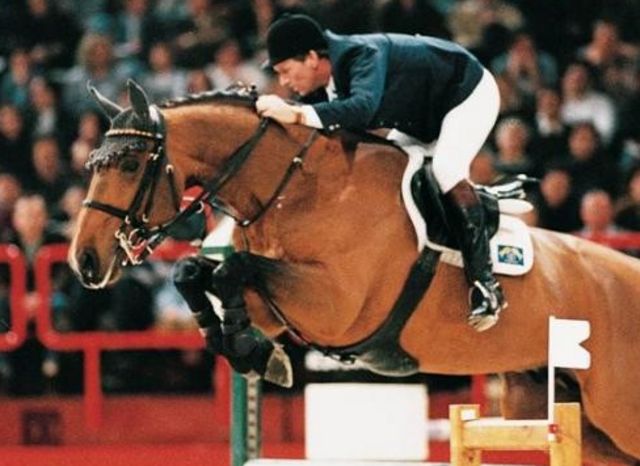
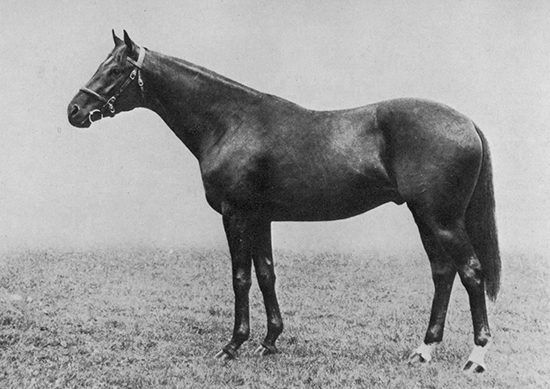
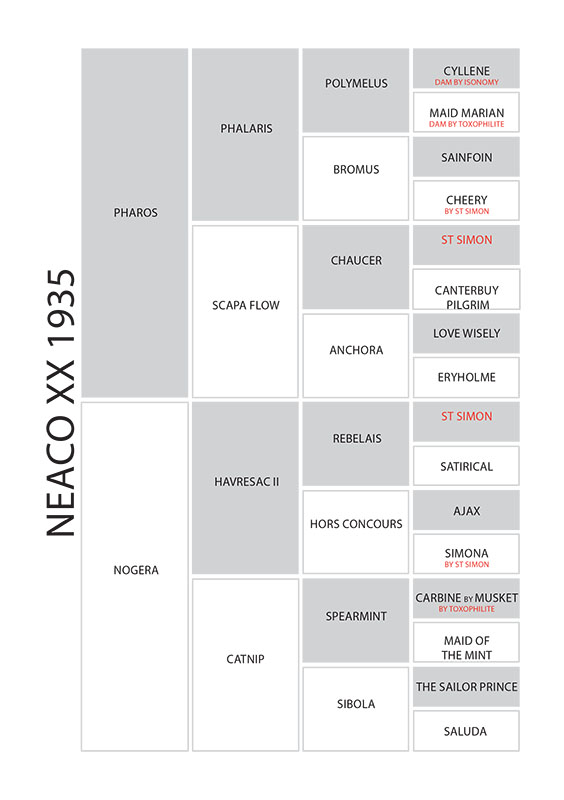
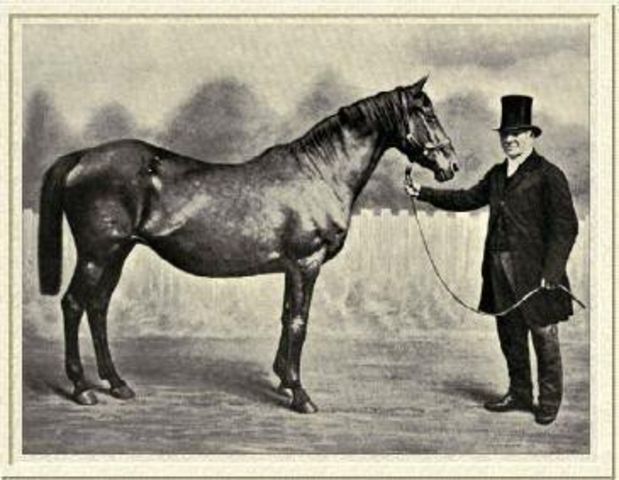
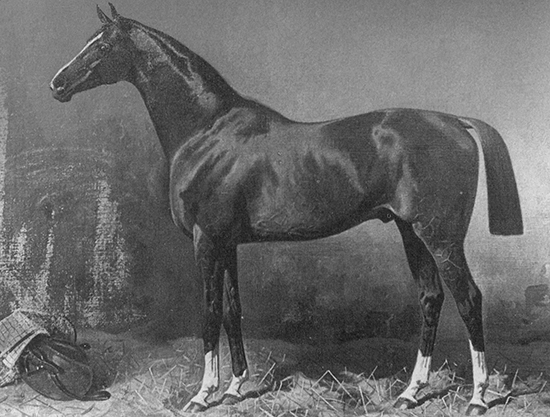
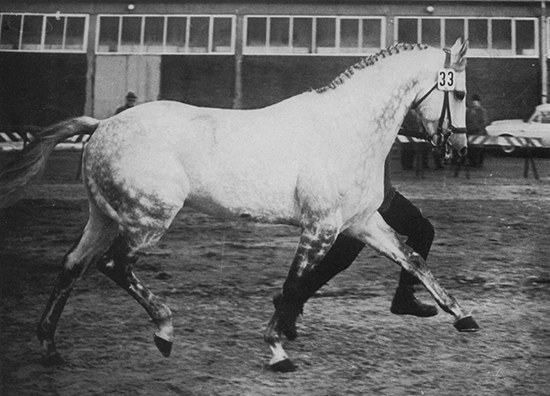
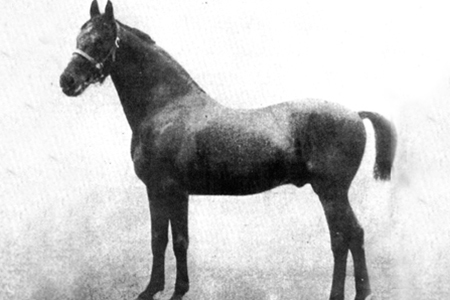
I am interested in the Inbreeding & Linebreeding article which you mentioned at the beginning, but I cannot find it. Can you share a link of the article so that I can read?
An excellent contribution, factual and with solid recommendations for an excellent breeding program. Clive Harper prefers line breeding mating in a sex balanced approach the 4th generation offsprings, with the 1st generation full siblings, each side building the ancestor/parent! Excellent!
i am trying to find information on cycle breeding mares i believe is at age 7 and every 4 yrs after stallions at age 6 and every 4yrs after . line breeding is very common in standardbreds.
This is interesting but faux science. In order to prove or disprove the line breeding hypothesis someone should analyse the pedigrees of many (50+?) stallions that are randomly chosen and, crucially, this sample has to contain stallions who were failures as jumpers.
You cannot prove a theory by looking at successful stallions. Only by looking at the whole population and seeing whether there is any difference between the succeeders and the failures.
It would also be interesting to compare full brothers/sisters of linebred horses to outcrossed full brothers/sisters and to see if they are less different one from the other if solidified on linebreeding